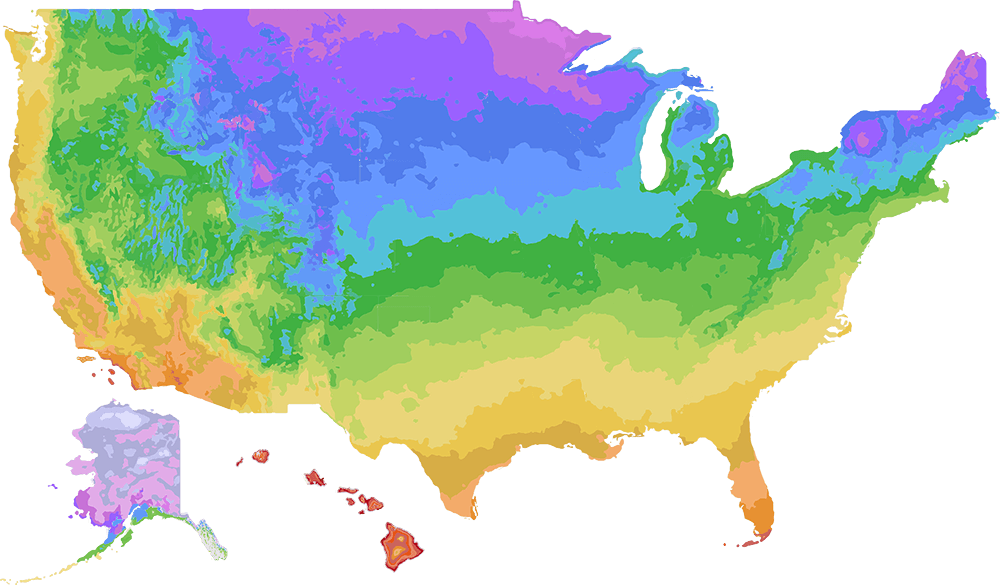I absolutely love these! I have five of them and they really brighten up the yard in the winter months. I bought quart sizes and they took about 3 years to really put on any measurable size and berries. This is their fourth year and they are really filled out (not full size) and have tons of berries! The berries are BRIGHT red and healthy looking for months! I live in northern Ohio and the berries didn’t start to darken till sometime in February. But by then, the birds were feasting away on them. I have never seen bluebirds in my yard before but these berries bring them in!
Berry Poppins® Winterberry Ilex verticillata
- Part Sun to Sun
- Sun
- Fall
- Winter
-
36 - 48 Inches36 - 60 Inches36 - 48 Inches91cm - 1.2m91cm - 1.5m91cm - 1.2m
Features
Winterberry holly is an awesome plant for winter landscapes, but many homeowners don't have room for a traditional variety. Berry Poppins® winterberry holly solves that, with a dwarf habit that can be used nearly anywhere. This deciduous holly loses its leaves every autumn but makes up for it with a heavy berry display that truly shines in the winter landscape. A male pollinator is required in order to set fruit; use Mr. Poppins® winterberry holly. Native to North America.
Top reasons to grow Berry Poppins® winterberry holly:
- smaller than conventional winterberry hollies, so perfect for home landscapes
- native plant attracts wildlife
- super colorful berry display enlivens winter landscapes
Best SellerProduces BerriesFall InterestWinter InterestAttracts:BirdsResists:DeerNative to North AmericaSmall or MiniatureCharacteristics
Plant Type:ShrubShrub Type:DeciduousHeight Category:MediumGarden Height:36 - 48 Inches 91cm - 1.2mSpacing:36 - 60 Inches 91cm - 1.5mSpread:36 - 48 Inches 91cm - 1.2mFlower Colors:WhiteFoliage Colors:GreenFoliage Shade:GreenHabit:UprightContainer Role:ThrillerPlant Needs
Light Requirement:Part Sun to SunLight Requirement:SunThe optimum amount of sun or shade each plant needs to thrive: Full Sun (6+ hours), Part Sun (4-6 hours), Full Shade (up to 4 hours).
Maintenance Category:EasyBlooms On:Old WoodBloom Time:Early WinterBloom Time:Mid WinterBloom Time:Late WinterHardiness Zones:3a, 3b, 4a, 4b, 5a, 5b, 6a, 6b, 7a, 7b, 8a, 8b, 9a, 9bWater Category:WetUses:Cut FlowerUses:LandscapeUses Notes:Landscapes
PLEASE NOTE: To produce berries, you'll need to plant Mr. Poppins® male winterberry holly as well.
Maintenance Notes:For complete details on growing and getting berries on winterberry holly, please see our Ultimate Guide to Winterberry Holly.
One male plant will pollinate up to 5 female plants; plant within 50' of one another to assure good pollination.
Adaptable to wet soils, does well in light and heavy soils. First class pick for planting in saturated areas.
It is best to avoid pruning winterberry hollies, except to remove whole branches for cut flowers or other decorating. Regular pruning or cutting back, however, will impact the number of flowers and the quantity of fruit that the plant sets. Little pruning should be required, though very old branches can be removed in early spring if they are no longer producing vigorous growth.
According to the Humane Society of America, ilex berries can be toxic to pets. This is means that the plants are generally identified as having the capability for producing a toxic reaction.
Berry Poppins® Ilex verticillata 'FarrowBPop' USPP 25,835, Can 5,286 -
5343211Browse reviews from people who have grown this plant.
-
Heather, Ohio, United States, 1 year ago
-
I bought this along with Mr. Poppins, the first year they were ok, I saw one berry. however both plants are dead now.
AG, North Carolina, United States, 2 years ago -
I just can NOT get enough of this plant!!!!! LOVE LOVE LOVE IT... counting the ways may prove impossible. The best part I love about this plant is that when all looks died or dying these red berries can be seen from half click away. Amazing beauty. I live in zone 6 and grows very well.
Suzette trimmer, Pennsylvania, United States, 11 years ago
-






















